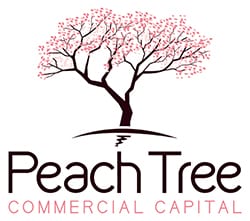US Bank recently announced the launch of a new digital lending platform for small businesses. With another bank joining established online lenders like OnDeck and Kabbage, business owners may again question whether a digital lender is the right solution for their financing needs. While there isn’t a one-size-fits-all answer to this question, considering the benefits and costs of using a digital lender will help you decide what is best for your company.
Pros of Digital Lenders
One significant benefit of digital lenders is their ease of use. For many online borrowers, the process of applying for a loan can be as simple as filling out a web form. Once the data is collected the lender will go over it with a fine-toothed comb to determine if the borrower meets their requirements. This process typically involves less back and forth communication and documentation, and as a result, it often takes less time than meeting with a traditional loan officer.
To simplify the process in this manner, many lenders offer only one or two types of loans. This allows them to streamline their underwriting and approval procedures, which in turn decreases their documentation requirements for borrowers and enables online applications.
Digital lenders may also offer quicker access to funding. Many digital lenders can approve loans at a faster pace due to the types of loans they offer, how they provide the funding and the terms of the loan agreement. Some online lenders can move from application to funding in as little as 48 hours while, in contrast, a major bank might take 30 – 60 days for underwriting and approval of some types of loans.
Cons of Digital Lenders
Digital lenders typically offer smaller loans than traditional lenders. For example, OnDeck maxes out its financing options at $500,000, while Kabbage only makes it up to $250,000. For an entrepreneur looking to make a significant business acquisition or a company purchasing an additional real estate, these terms are quite limiting. On the other hand, many commercial loan brokerages, such as ours, can comfortably handle loans exceeding $50 million.
A related drawback to many digital lenders is the limited scope of financing vehicles available. For example, OnDeck offers term loans and lines of credit, while Kabbage offers only lines of credit. This means that if you are looking for a real estate loan, a sale-leaseback, an SBA loan, purchase order financing, or any other lending options, you will need to find a different lender. A well-established brokerage, on the other hand, will be able to help you source all of these loan types, plus many more.
Additionally, digital lenders may have a higher interest rate than a traditional lender or broker. For example, Kabbage offers lines of credit with an interest rate of between 1.5% and 10% EVERY SINGLE MONTH. Annualized, that translates to an APR of 24% up to 99%. Through a loan broker, strong borrowers could expect a line of credit from 5% to 7% APR. For term loans, OnDeck’s average annual interest rate is 47.8% as of the 3rd quarter of June 2018. Through a loan brokerage, the terms are much more favorable and a business can often secure term loans with an APR of 5% to 10%.
A Relationship with an Industry Advisor
On average, a commercial loan broker will provide significantly more support throughout the borrowing process. You are more than just an account number to brokers, who get to know you personally and are vested in your success.
Brokers aren’t just a source for loans, either. They serve as an industry resource to guide you in the right direction for financing. No one loan will work for every type of business. A broker will work with you to not only find the right loan but help you find the resources and services so that you can best utilize your loan.
There are benefits to digital lenders, but they aren’t the right solution for every need. If you would like to explore all of your options, our team is here to help you figure out the best solution for your needs.

